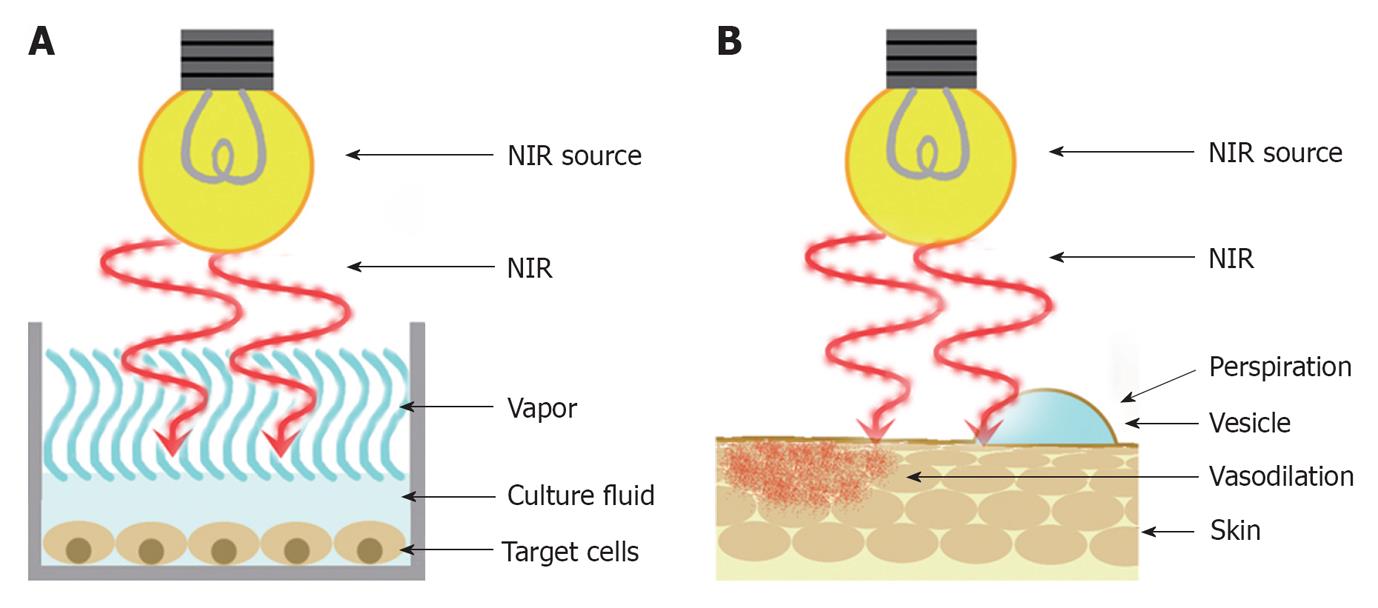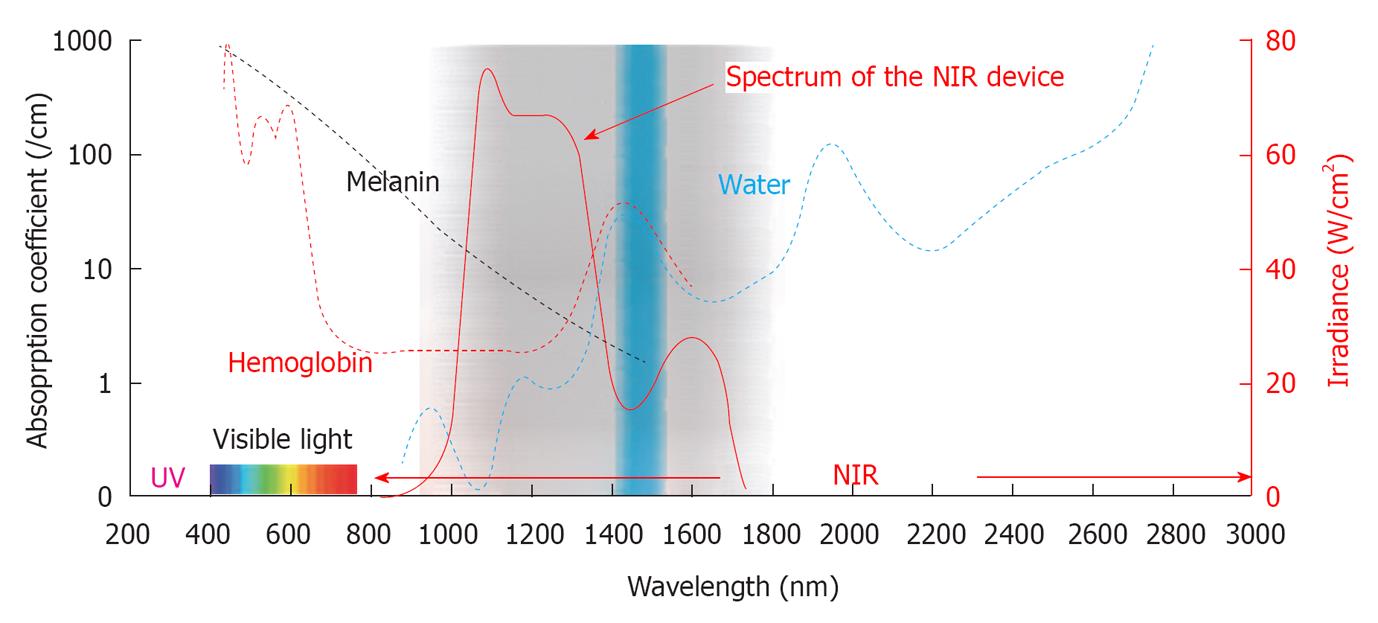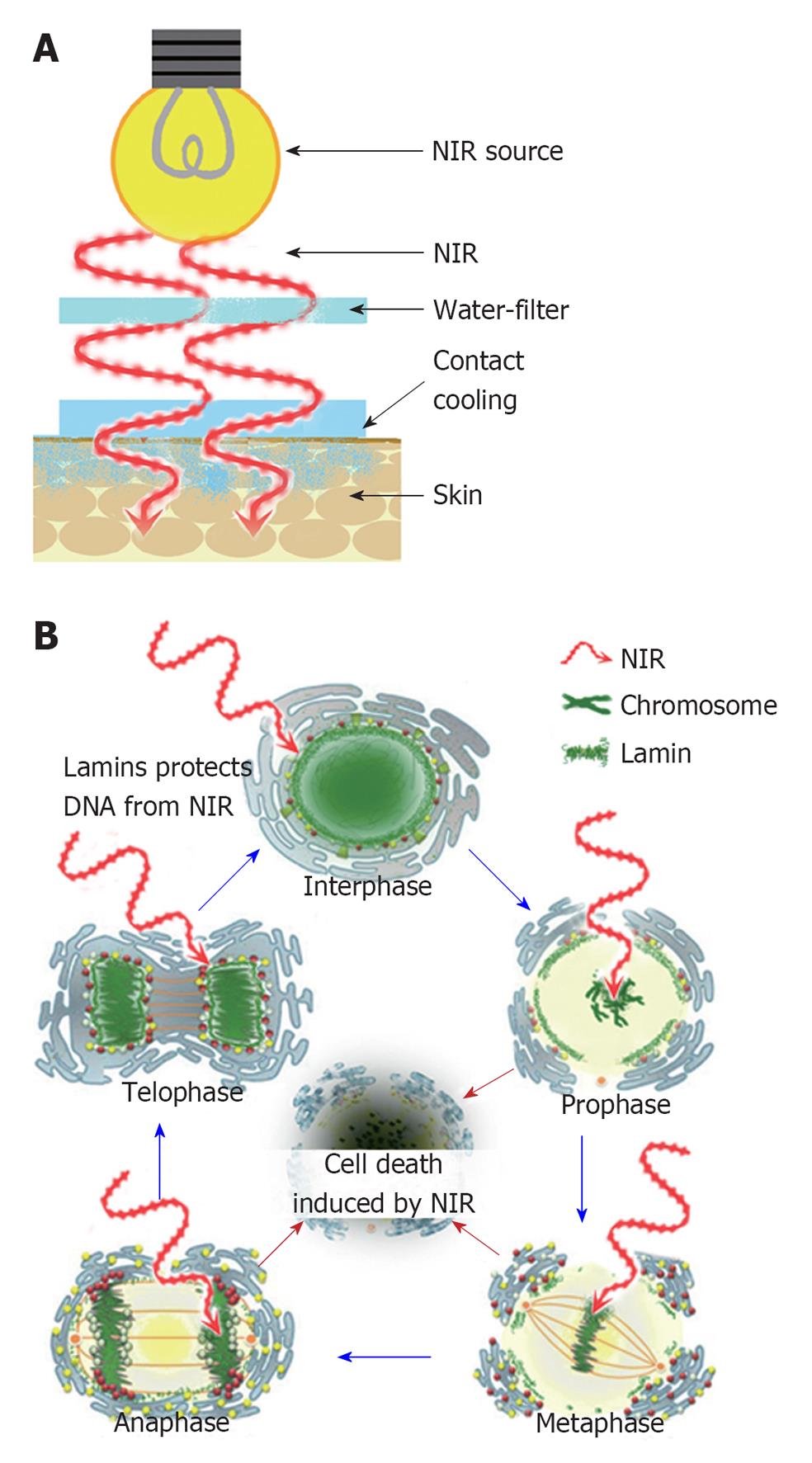Copyright
©2012 Baishideng.
Figure 1 A schematic of the previous in vitro and in vivo research.
A: In vitro research. B: In vivo research. NIR: Near-infrared.
Figure 2 Solar radiation.
This graph shows the radiation spectrum for direct light both at the top of the earth’s atmosphere (yellow) and at sea level (red). The sun produces light with a distribution similar to that expected from a 5250 °C blackbody (gray), which is approximately the temperature of the sun’s surface. As light passes through the atmosphere, some is absorbed by gases with specific absorption bands (blue). These curves are based on the American Society for Testing and Materials Terrestrial Reference Spectra, which are standards adopted by the photovoltaic industry to ensure consistent test conditions and are similar to the light levels expected in North America. Regions for ultraviolet, visible and near-infrared are indicated. Cited and revised from Figure 2 of reference 3.
Figure 3 The absorption coefficients and wavelength of the near-infrared device.
This graph shows the absorption coefficients of melanin (brown), hemoglobin (red) and water (blue). The near-infrared (NIR) device used in our study emits a spectrum of NIR from 1100 to 1800 nm (bold red), with filtering of wavelengths between 1400 and 1500 nm (blue belt) that are strongly absorbed by water and hemoglobin. Cited and revised from Figure 2 of reference 3.
Figure 4 A schematic of my near-infrared research and cell cycle.
A: A schematic of my near-infrared (NIR) research; B: A schematic of the cell cycle and effects of NIR. NIR cannot penetrate the nuclear envelope due to the protection of nuclear lamins in interphase and telophase. NIR may damage the chromosomes of mitotic cells in prophase, metaphase and anaphase due to the absence of nuclear lamin protection, which results in apoptotic cell death. Cited and revised from Figure 15 of reference 5.
- Citation: Tanaka Y. Impact of near-infrared radiation in dermatology. World J Dermatol 2012; 1(3): 30-37
- URL: https://www.wjgnet.com/2218-6190/full/v1/i3/30.htm
- DOI: https://dx.doi.org/10.5314/wjd.v1.i3.30












